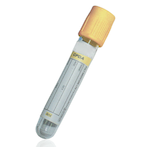
- Home
- Clinical Chemistry Tests
- Angiotensin Converting Enzyme (ACE)
Angiotensin Converting Enzyme (ACE)
Specimen Volume
1 mL bloodSpecimen Transport
Not applicable
Sample Preparation
Centrifuge
Turnaround Time
7 daysSample Processing In Laboratory
No special requirements
Sample Stability
Stable for 30 days at 2-8°C and six months at -20 ºC.General Information
Elevated levels of ACE occur in the serum of patients with active sarcoidosis, tuberculosis, Gaucher's (a lysosomal storage disease), leprosy, many other pathologic conditions including lung and liver disease, and occasionally in premature infants with respiratory distress syndrome. ACE levels are also raised in hyperthyroidism.
In 40 to 60% of patients with sarcoidosis, ACE activity is increased. However, a single ACE measurement does not necessarily predict the presence or extent of lung injury. The main clinical use of ACE measurements is of serial levels in therapeutic monitoring and as a warning of possible relapse.
Patient Preparation
None
Notes
Do not use EDTA plasma as EDTA inhibits ACE activity. Serum (yellow top/red top) is the only suitable sample type for this assay.
Haemolysis, lipaemia and jaundice interfere
Reference Range
Adults: 20-70 IU/L
(Source: Buhlmann Laboratories)
Serum levels in individuals under 18 years of age are substantially higher and more variable than in adults.
Source of Reference Range
Buhlmann laboratoriesSpecifications
- EQA Status: WEQAS
- EQAS Scheme: Yes
Link to Further Information
http://www.labtestsonline.org.uk/understanding/analytes/ace/Related Tests
Calcium (adjusted)Creation Date
Monday, 08 August 2011Modification Date
Thursday, 17 May 2018General Information
Location of Laboratories
Copyright UHB Pathology 2018
Protection of Personal Information – Clinical Laboratory Services comply with the Trust Data Protection Policy and have procedures in place to allow the Directorate and it’s employees to comply with the Data Protection Act 1998 and associated best practice and guidance.
University Hospitals Birmingham medical laboratories at Queen Elizabeth Hospital, Heartlands Hospital, Good Hope Hospital and Solihull Hospital are UKAS (United Kingdom Accreditation Service) accredited to the ISO 15189:2012 standard. For a list of accredited tests and other information please visit the UKAS website using the following link: https://www.ukas.com/find-an-organisation/
- Molecular Pathology is a UKAS accredited medical laboratory No. 8759
- Biochemistry is a UKAS accredited medical laboratory No. 8910
- Haematology and Transfusion is a UKAS accredited medical laboratory No. 8784
- Clinical Microbiology is a UKAS accredited medical laboratory No. 8760
- Cellular Pathology is a UKAS accredited medical laboratory No. 10141
- Musculoskeletal laboratory is a UKAS accredited medical laboratory No. 9897
- Heartlands, Good Hope and Solihull Hospital pathology laboratories are a UKAS accredited medical laboratory No.8217.
Tests not appearing on the UKAS Schedule of Accreditation currently remain outside of our scope of accreditation. However, these tests have been validated to the same high standard as accredited tests and are performed by the same trained and competent staff.
For further test information, please visit the test database: http://qehbpathology.uk/test-database
For further information contact Louise Fallon, Quality Manager, 0121 371 5962
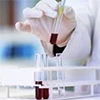 Biochemistry
Biochemistry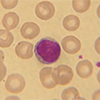 Haematology and Transfusion
Haematology and Transfusion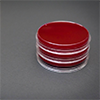 Clinical Microbiology (Including Virology)
Clinical Microbiology (Including Virology)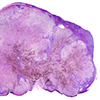 Cellular Pathology
Cellular Pathology General Information
General Information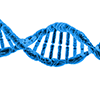 Molecular Pathology
Molecular Pathology